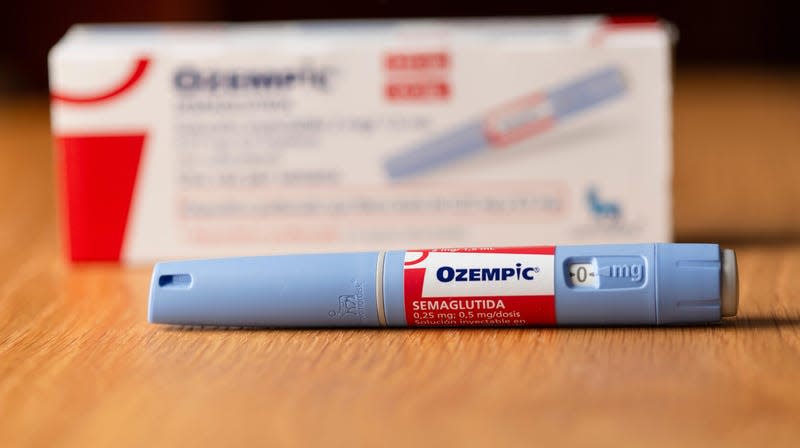Ozempic, Wellbutrin, and Hundreds of Other Drugs Just Got More Expensive

An injection pen of Ozempic, the popular drug used to treat type 2 diabetes and obesity.
Another year, another round of inscrutable price increases for many prescription drugs. Over 700 medicines are seeing their list prices shoot up this January, according to an analysis by the organization 46brooklyn Research. The average price increase is slightly below the trend of recent years, but includes popular drugs used for weight loss like Ozempic and Mounjaro.
The Ohio-based 46brooklyn is a nonprofit corporation that describes its purpose as seeking “to improve the accessibility and usability of U.S. drug pricing data.” The organization maintains a database of changes in prescription list prices via its Brand Drug List Price Change Box Score, which is sourced from other pieces of data, such as Medicaid spending. The Box Score is updated weekly in January, then monthly for the rest of the year. Historically, the largest batches of increases happen in January or July, and usually more during the former.
Read more
Donkey Kong Coaster Jumps The Rails, Just Like The SNES Games
I Cut The Roof Off Of My Porsche 996 Turbo And I Might Throw Up A Little
Other drugs that have seen an increase in 2024 include the painkiller Oxycontin, the blood thinner Plavix, and the antidepressant Wellbutrin. A much smaller list of drugs has seen a price drop, including the brand name erectile dysfunction drug Cialis, the antidepressant Prozac, and several popular insulin products. The drop in insulin prices is largely the result of policies passed by the federal government in recent years meant to cap the out-of-pocket cost of insulin to $35 a month. While these policies affect Medicare patients the most, other changes have made it possible for many drug companies to actually save money overall by lowering list prices.
More from Gizmodo
This Stomach-Churning Conservative May Be Donald Trump's VP Pick
'80s film fans rejoice: The Brat Pack is getting a documentary
We should all follow Paul Schrader's lead and write film reviews while on Ambien
Dealers Successfully Force The Feds To Temporarily Back Down On Banning Shady Junk Fees
Kelce is retiring and you can't blame Taylor Swift [Updated]
Sign up for Gizmodo's Newsletter. For the latest news, Facebook, Twitter and Instagram.

